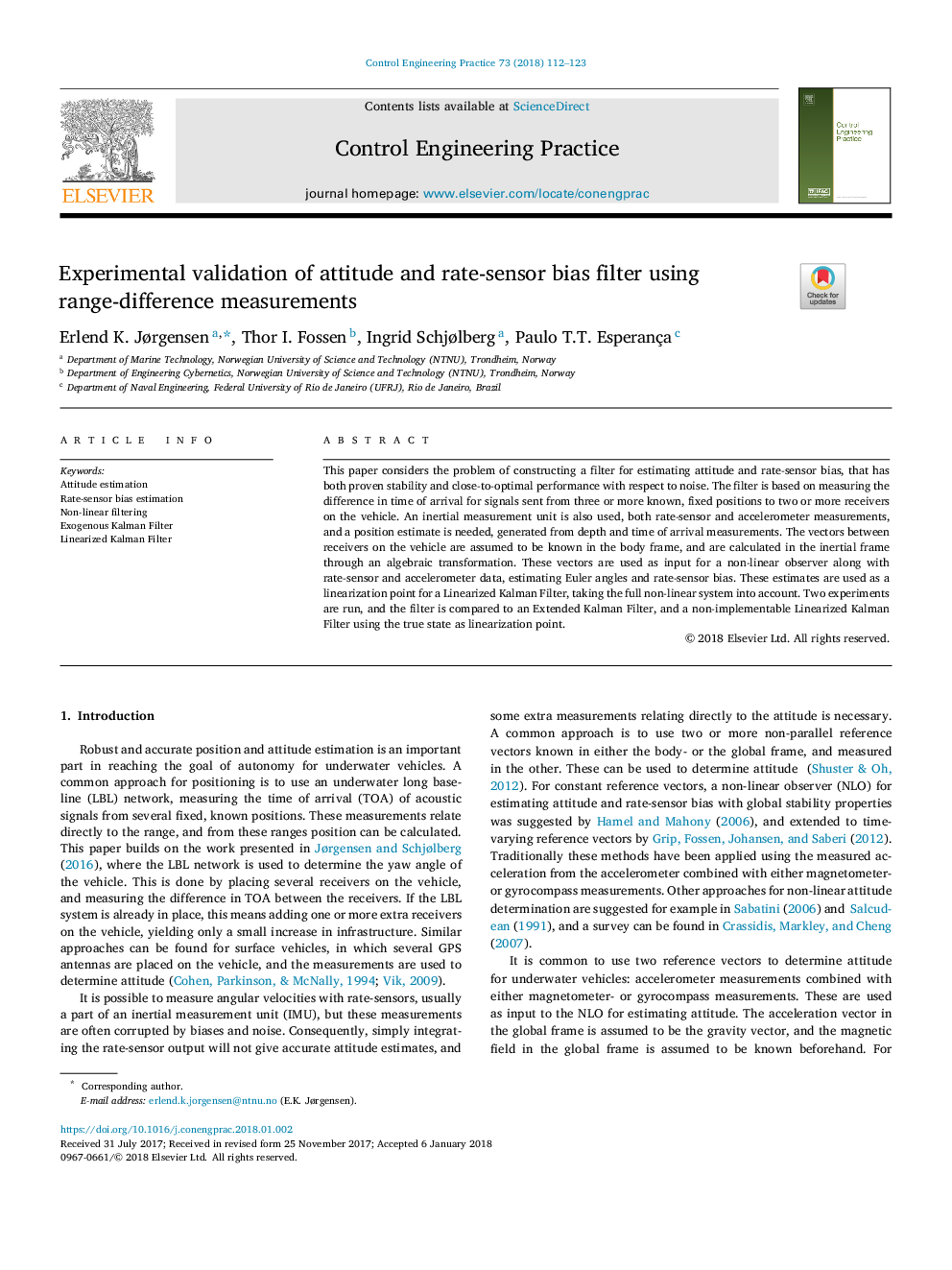| Article ID | Journal | Published Year | Pages | File Type |
|---|---|---|---|---|
| 7110391 | Control Engineering Practice | 2018 | 12 Pages |
Abstract
This paper considers the problem of constructing a filter for estimating attitude and rate-sensor bias, that has both proven stability and close-to-optimal performance with respect to noise. The filter is based on measuring the difference in time of arrival for signals sent from three or more known, fixed positions to two or more receivers on the vehicle. An inertial measurement unit is also used, both rate-sensor and accelerometer measurements, and a position estimate is needed, generated from depth and time of arrival measurements. The vectors between receivers on the vehicle are assumed to be known in the body frame, and are calculated in the inertial frame through an algebraic transformation. These vectors are used as input for a non-linear observer along with rate-sensor and accelerometer data, estimating Euler angles and rate-sensor bias. These estimates are used as a linearization point for a Linearized Kalman Filter, taking the full non-linear system into account. Two experiments are run, and the filter is compared to an Extended Kalman Filter, and a non-implementable Linearized Kalman Filter using the true state as linearization point.
Related Topics
Physical Sciences and Engineering
Engineering
Aerospace Engineering
Authors
Erlend K. Jørgensen, Thor I. Fossen, Ingrid Schjølberg, Paulo T.T. Esperança,
